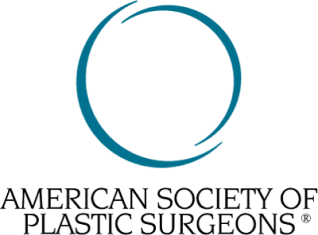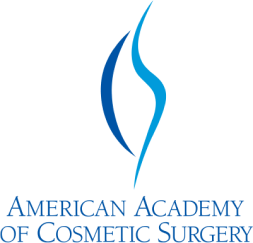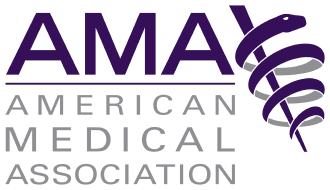Rhinoplasty, commonly known as a nose job, can dramatically improve facial harmony and breathing. However, like any surgery, it comes with a healing timeline. If you’re considering the procedure, you’re probably wondering: How long does it take to recover from rhinoplasty?
Truthfully, it means what you mean by “recover.” Most people feel ready to return to work or school in 1–2 weeks. However, full healing can take up to a year.
At Liposuction and Cosmetic Surgery Institute, our board-certified plastic surgeons walk every patient through what to expect at each stage of recovery. Below, we’ve broken down the rhinoplasty healing process, step-by-step.
Week-by-Week Rhinoplasty Recovery Timeline
Healing after rhinoplasty happens in stages. While no two experiences are identical, most patients follow a similar pattern. Here’s a look at what you can expect, from the first 48 hours to the final results one year later.
Days 0–2: Immediate Post-Op Recovery
The first couple of days are all about rest. You’ll likely feel groggy from anesthesia and notice significant swelling and nasal congestion. It’s completely normal for your nose to feel blocked and for your face to look puffy or bruised.
During this time, it’s important to sleep with your head elevated and apply cold compresses to help reduce inflammation. Aside from gentle walking around the house, you should avoid all physical activity and focus entirely on healing.
Days 3–7: Peak Swelling and Bruising
Swelling and bruising typically reach their peak during this period. If you had an open rhinoplasty, expect severe swelling around the eyes. You may still be wearing an external splint and possibly internal packing, and you may still be in pain. However, pain typically becomes more manageable as the week progresses.
During this stage, most patients start to feel less foggy and more mobile, though they’re not quite ready to return to work or social activities. This phase often looks worse than it feels, and by the end of the week, you’ll likely notice small signs that your body is turning the corner.
Days 7–10: Splint Removal and Early Results
Around this time, your surgeon will likely remove your external splint and any sutures. Although swelling is still present, many patients catch their first glimpse of their reshaped nose. The bridge may appear more defined, but the tip is still puffy.
Light, non-physical activities like returning to school or desk work may be appropriate. While your nose isn’t healed yet, you’ll start feeling more like yourself and ready to re-enter the world with some caution.
Weeks 2–4: Return to Light Activity
Bruising is mostly gone by now, and swelling continues to improve, especially in the upper part of the nose. You can return to more of your daily routine, including social outings, light errands, and self-care tasks like gentle face washing and showering (with cooler water).
Nasal airflow also begins to improve as internal swelling decreases. While you’ll still want to avoid strenuous activity, most patients feel more confident going out in public and no longer feel the need to explain they’ve had surgery.
Weeks 4–6: Resuming Moderate Physical Activity
By this stage, your nose looks relatively normal to others, and your surgeon may clear you for moderate physical activity. You can typically return to the gym for light workouts. However, you’ll need to avoid anything that risks bumping your face or putting pressure on your nose.
Internal healing is still taking place, especially in the tip, so it’s essential to continue protecting your nose from impact, heat, and strain. During this stage, your results begin to emerge more clearly, though they will be subtle at first.
Months 3–6: Structural Healing and Refinement
During this phase, most residual swelling fades. Your nasal structure continues to settle into place, and the contours become more refined. People often comment on how balanced or refreshed you look without realizing you’ve had surgery.
You’ll likely feel fully recovered in daily life, though your nose is still undergoing internal healing. This is when your surgeon’s work becomes truly visible.
12 Months: Full Recovery and Final Results
It can take a full year for your rhinoplasty results to completely stabilize. This is especially true for patients who had thicker skin, a revision procedure, or more dramatic structural changes.
By the 12-month mark, all swelling has resolved, and your nose has reached its final shape. The tissue has softened, the tip has refined, and your results are now long-term. You’ve made it through the healing journey, and the results are here to stay.
What Affects Rhinoplasty Recovery Time?
While most patients follow a similar timeline, individual healing can be influenced by several factors. Some of these factors are within your control, while others amount to anatomy and surgical approach. Factors influencing rhinoplasty recovery time include:
- Surgical technique: Open rhinoplasty often causes more visible swelling early on than closed procedures.
- Primary vs. revision: Revision rhinoplasty typically involves more scar tissue and a longer recovery.
- Skin type: Thicker skin takes longer to conform to the nose’s new shape.
- Lifestyle habits: Smoking, poor diet, and alcohol use can all delay healing.
- Post-op care: Following your surgeon’s instructions carefully makes a noticeable difference.
Fortunately, the biggest influencer, which is how well you care for yourself after surgery, is entirely within your control.
Tips for a Smooth Recovery
A few smart choices can go a long way toward speeding up your healing and protecting your results. Here’s what our surgeons recommend:
- Sleep on your back with your head elevated for at least 1–2 weeks.
- Use cold compresses during the first 48 hours to reduce swelling (as advised).
- Start short, gentle walks after 24–48 hours to promote circulation.
- Avoid wearing glasses on the bridge of your nose until cleared by your surgeon.
- Eat well and stay hydrated to support tissue healing.
- Use a saline spray to keep nasal passages moist.
- Protect your nose from the sun with a hat or SPF.
- Go to all follow-up appointments to track healing and catch any issues early.
When in doubt, ask your provider. A little extra caution now prevents problems later.
What Not to Do After Rhinoplasty
Knowing what to avoid is just as important as knowing what to do. Here are some things to steer clear of until your surgeon says otherwise:
- Sleeping on your stomach or side
- Blowing your nose or sneezing forcefully
- Wearing glasses without support
- Exercising, lifting, or bending over
- Taking hot showers or using saunas
- Swimming (especially in chlorinated water)
- Drinking alcohol or smoking
- Touching, bumping, or massaging your nose
Avoiding these risks ensures your new nose heals in the safest, most predictable way possible.
When to Contact Your Surgeon
Side effects like swelling and mild discomfort are normal. But if you notice anything unusual, reach out to your surgical team. Call your provider if you experience:
- Persistent or worsening bleeding
- Sudden swelling or pain
- Fever, chills, or signs of infection
- Breathing difficulty that gets worse
- Foul-smelling drainage
At Liposuction and Cosmetic Surgery Institute, we prioritize patient safety and stay connected to you through every phase of recovery.
Why Choose Liposuction and Cosmetic Surgery Institute?
With four convenient locations across Chicagoland and decades of experience, we’ve helped thousands of patients feel more confident with natural-looking results. Our board-certified plastic surgeons bring surgical skill, artistic detail, and personalized attention to every rhinoplasty procedure. We don’t just reshape noses. We support patients through every step of their transformation.
Learn more about rhinoplasty at Liposuction and Cosmetic Surgery Institute.
Start Your Rhinoplasty Journey with Us
If you’re ready to feel more confident in your appearance or improve your breathing, we’re here to help. Call Liposuction and Cosmetic Surgery Institute today or schedule your consultation online, and take the first step toward a beautifully balanced result.







